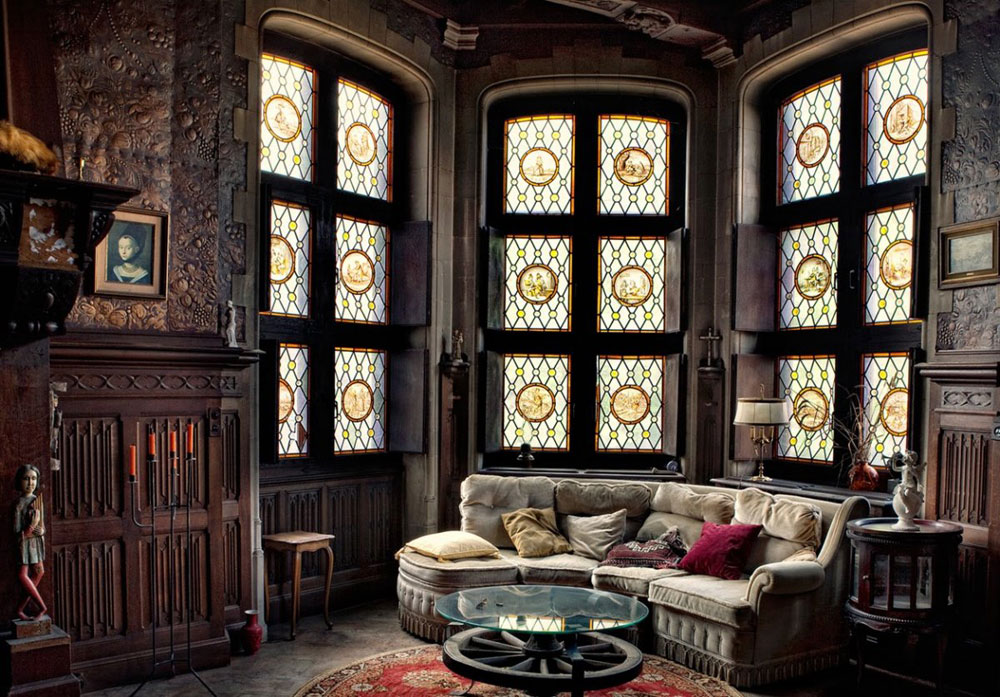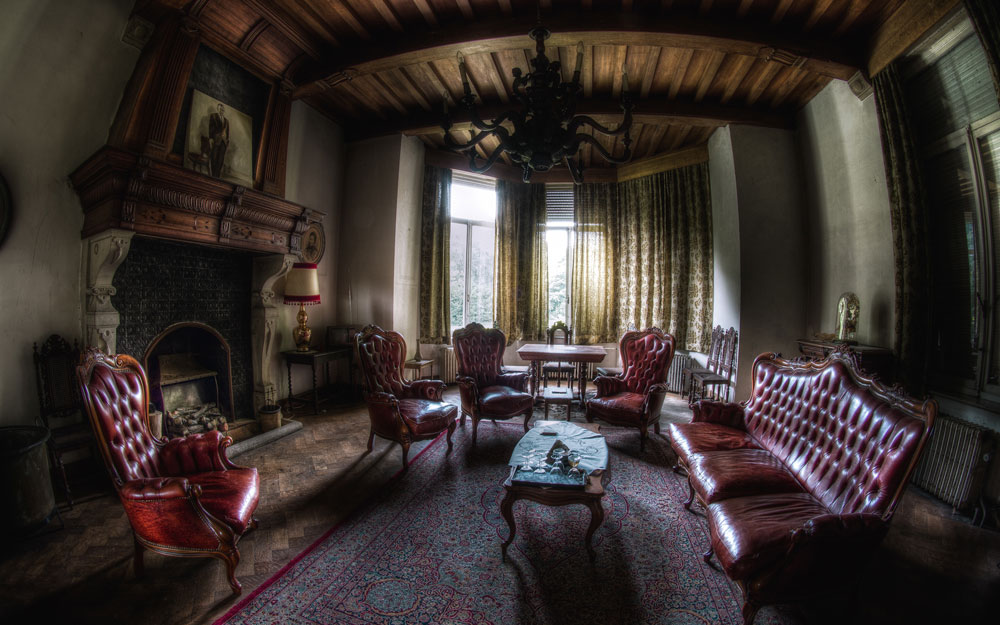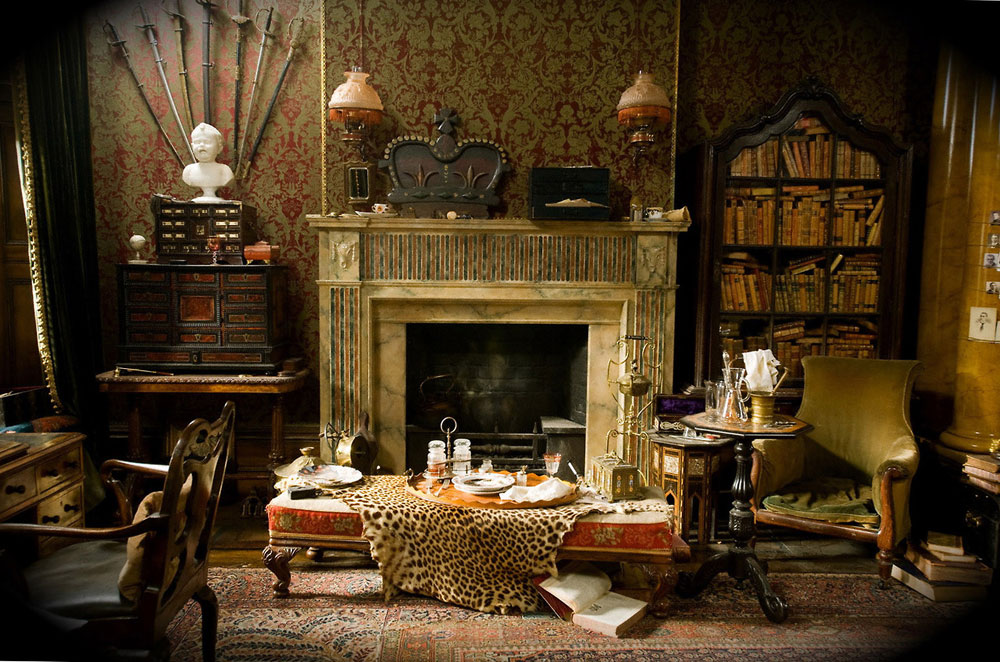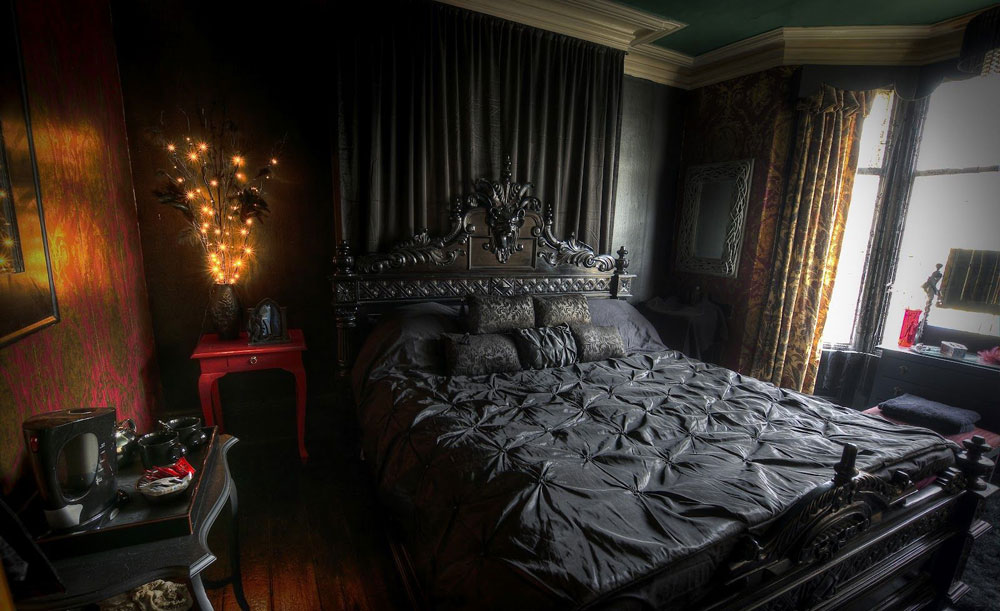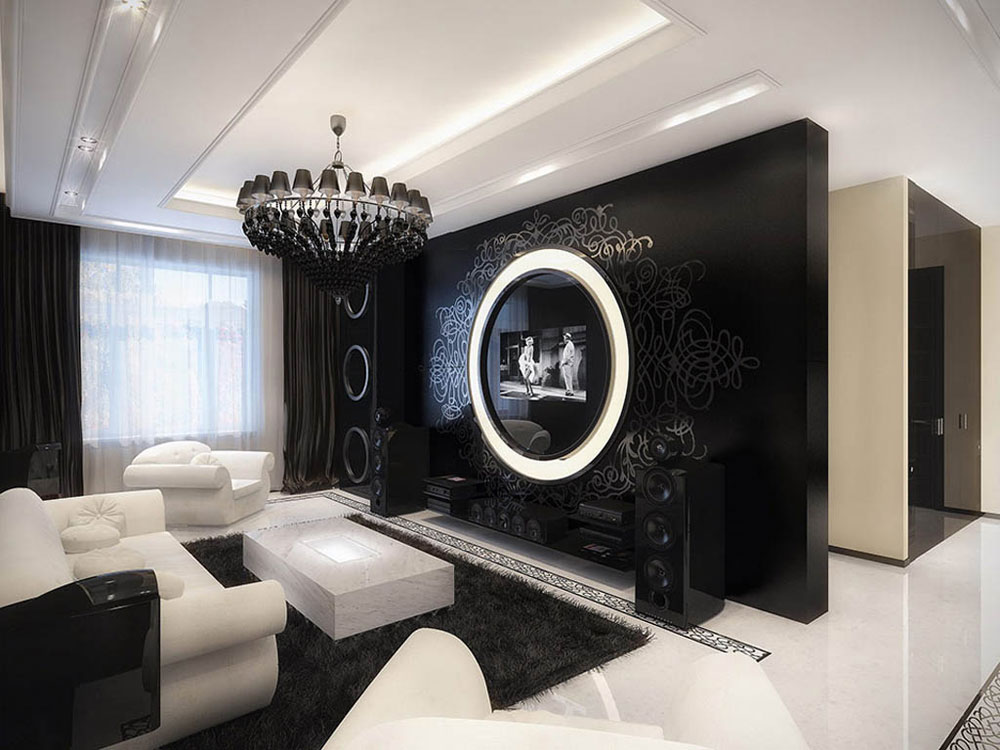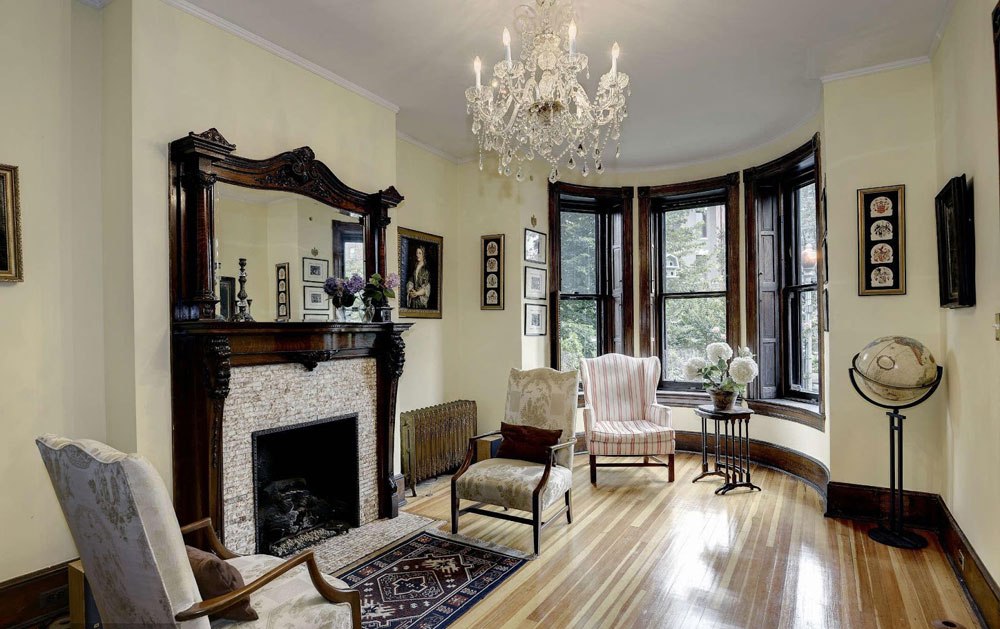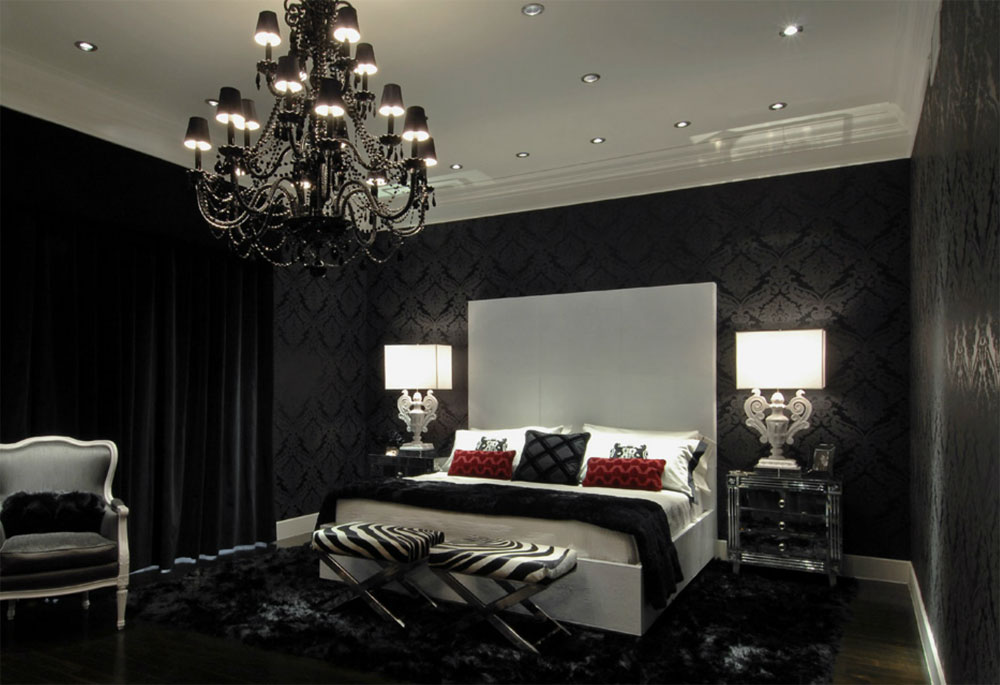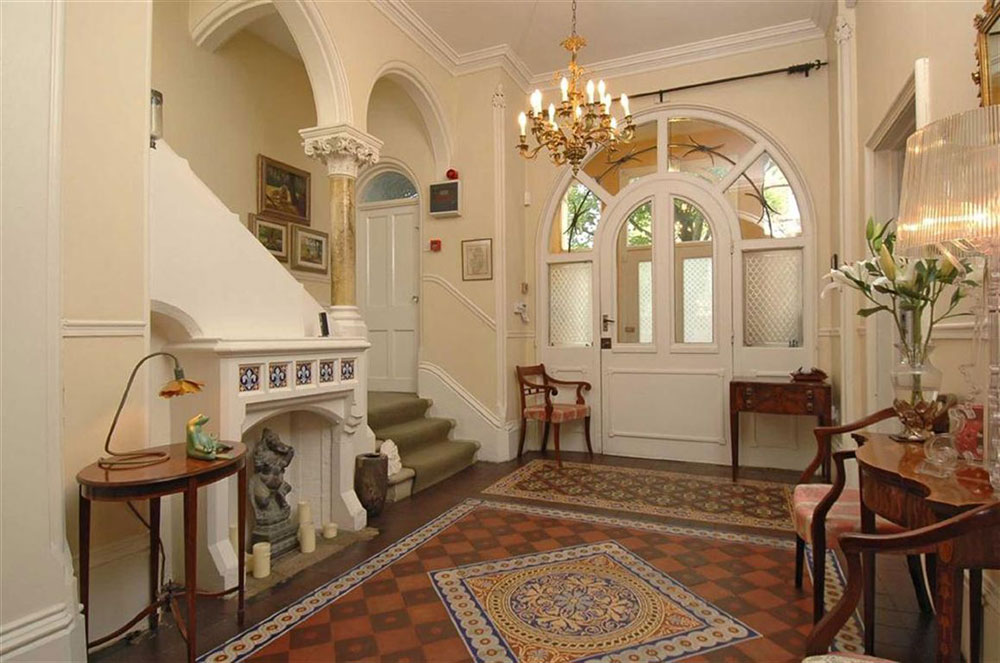Advertisement
Gothic Interior Design and Medieval Interiors represent the same era – the Middle Ages, however, that is where the similarities end. They are two quite unique styles.
Often the term Gothic Victorian house interior causes people to imagine creepy, decrepit mansions with black walls and windows with heavy drapes shutting out any light. The typical idea of a Gothic room sends shivers down the spine of most people.
In reality, Victorian Gothic is an architectural style found as early as the 1740s with designs so beautiful and intricate that modern homeowners seek to incorporate these Gothic interior design characteristics into the look and feel of their homes.
The modern Gothic interior design movement offers intricate, elegant and beautiful pieces for your home. To incorporate this opulent style into your home, there are several descriptions of the style followed by ideas to inspire your Gothic inspired interior design.
The Gothic Era
Gothic architecture first took the stage around 1150 AD during the Medieval Period, when it became a significant part of building design. At that time, it was known as “the French Style.”
You can still find many gorgeous examples of the Gothic Style in the United Kingdom and throughout Europe in general and in Paris, France, in particular. The design is most apparent in the Gothic cathedrals which were built to endure for centuries.
Today, these works present modern society with a chance to see the significant ability, the never-ending determination and solid engineering used in creating these awe-inspiring structures. The ‘flying buttress,’ perhaps the most recognized Gothic element today, was created in the medieval era. A perfect example of an early flying buttress can be seen at the Notre Dame Cathedral in Paris, a gothic cathedral which is famous throughout the world.
Gothic’s ‘pointy’ style was an ornate look used in doorways, chairs, and archways in a way that medieval society had not seen before. Architects used symmetry in a proportional manner to balance the Gothic interior’s space.
The gothic interior design also introduced the divinely inspired, ecclesiastic style, which represented an era where the Catholic church had triumphed over paganism throughout Europe. This divine movement created a new age of breathtaking Gothic style cathedrals, which spurred engineers to invent new building methods to support the extreme mass required for these majestic structures.
The Gothic Style
So, now when you imagine the Victorian Gothic style, imagine ancient, intricately decorated churches instead of dark, dreary rooms. Picture yourself in a sanctuary with stately stained glass Gothic windows with complex designs of trefoils or roses. Majestic fireplaces hold court below the exposed wooden rafters and beams, as fluttering candlelight completes the divinely inspired look.
The Gothic design was a vertical style, created by the looming Gothic arch, and as windows grew larger and larger, the light came to play a greater role in Gothic décor. This increased amount of light and air flow enlivened the once dark and glum feel of Romanesque-era churches.
Striking Features of Gothic Style
Gothic Furniture – Gothic Victorian furniture was made of heavy, sturdy oak, and adorned with period designs. The chairs, headboards, and cabinetry abounded with arches, legs with spiral turns, and upholstery of heavy fabrics made of dark, majestic colors. If you are inspired by Gothic design, consider retired pieces from an old church, including pews, benches, altar chairs or trestle tables. The Arts and Crafts era furniture pieces share similar motifs and be an acceptable alternative for your Gothic room.
Gothic Color – With majestic architecture and heavy furniture, the Gothic style lends itself to rich and dark colors. The Gothic Victorian house had somber hues of purple, ruby, black, ochre, forest green, and gold – the best complement to the rich, majestic air of the furniture and design. Gothic patterns of flowers and greenery were used to cover walls.
Stenciled designs, heraldic symbols, and the popular tromp-l’oil 3D-design effect were common in gothic interior design. Gothic designers painted walls in flat colors to simulate a stone surface and covered walls with fabric hangings and tapestries. Stained glass windows were accented with wrought iron, full suits of armor, pewter, and candles. Carved ribbing and cornices were commonly found in the designs.
Gothic Influences – The church was the largest influence on gothic designs, and this ecclesiastical inspiration is obvious in its style. Architecturally, the Gothic period drew from Roman and Medieval styles, with elaborately carved wooden features and ornamental open tracery commonly found in the upper parts of stained glass windows.
Achieving Gothic Interior Design in your Home
Dramatic Elegance
Do not be afraid of being dramatic in your Gothic interior, but keep it elegant.
This is not a design for the timid or understated. When creating a gothic home, drape those high-end fabrics. Use heavy, carved wooden furniture with curved ornate features. Design your Gothic living room with lots of decorative details. Your goth bedroom will be decadent, luxurious and highly sensual.
Wallpaper for Victorian Styling
Gothic homes should have some wallpaper if you wish to keep it true to its Gothic roots.
Choose from an ornate, patterned wallpaper to create your favorite version of the Gothic style. Other un-papered walls should be painted with rich hues.
Colors to Choose in Gothic interior design
Use black, sparingly or in moderation in gothic houses. You do not want to fall into the Gothic stereotype of a dark, haunted mansion. Focus on the rich, dramatic colors of this era. Medieval Gothic buildings have walls painted in dark but vibrant colors including emerald green, deep burgundy, ruby red or a dark ocean blue.
Fabrics to Choose for Gothic interior
Again, you should choose bold and dramatic, yet elegant materials for your modern Gothic room.
To achieve a Gothic style, pick up silk, satin and velvet fabrics with rich and bold colors, patterns and textures. Velvet is a nice touch for curtains or modern gothic furniture coverings. Satin works well for drapes, bedding, and pillows. Think glamour and decadence when selecting fabric for your Gothic home décor.
Accessories to Choose for a Gothic house interior
Victorian Gothic homes contained many ornately styled decorations. You will want to select display pieces with heavy wrought-iron, metal, wooden or stone features. Some good examples include pottery dishes, wooden, carved sconces and lamps made of wrought iron. Add art to your home by searching for gothic paintings.
Setting the Tone in a Gothic Mansion Interior
The tone of a modern Gothic interior design should be dark and moody while avoiding the “haunted mansion” stereotype. To do that you may want to choose wallpaper from several collections with black features in unique patterns. You may also wish to select black gothic style furniture carved with intricate details. Finally, a single, striking, distinct piece will give your Gothic room focal point and add some color.
Ending thoughts on Gothic interior design
There are so many different styles and pieces that can be added for a Victorian Gothic look. Consider how intense you want your Gothic interior design style to be. To go fully Gothic, add all the dramatic elements we’ve discussed including the fabric, the textures, the rich colors, the dark wallpaper, the heavy curtains, the dramatic windows, the moldings and the attention-grabbing architecture. Don’t forget the gothic bedroom furniture for a decadent feel to your gothic style house.
If the whole Gothic package seems a little much for your tastes, then use a few pieces in this style to accent your room, by choosing such items as dramatic draperies or an intricately carved table of dark wood. Touches of goth home décor will still add sensuality to your home.
As with any style choice, you can go full speed ahead or you can use a more subtle, understated approach.
FAQs about modern Gothic interior design
1. What are the key elements of modern gothic interior design?
Dark hues, elaborate patterns, and dramatic embellishments like chandeliers or Gothic arches are essential components of modern Gothic interior design. Heavy curtains, velvet or leather upholstery, and wrought-iron accents are other elements. Together, these components produce a gloomy, sophisticated ambiance that has the potential to be both elegant and edgy.
2. How can I incorporate gothic design into a modern home?
Consider adding features like Gothic arches or stained glass windows to a modern area to add a touch of Gothic design. Include gothic-inspired furnishings such as elaborate chandeliers, wrought-iron fixtures, and luxurious velvet or leather upholstery using a black or gloomy color scheme as the foundation. To provide depth and contrast to the area, use texture and layering.
3. What colors are typically used in modern Gothic design?
Black, dark crimson, purple, and dark green are frequently utilized hues in modern Gothic architecture and design. These hues are frequently used as a foundation, with metallic accents or flashes of more vibrant hues added to provide contrast and interest. Together, these hues can produce a dark, yet beautiful ambiance that is at once classic and modern.
4. How can I balance the dark and moody aesthetic of gothic design with a lighter, more modern feel?
Consider introducing components like vibrant artwork or a statement rug to break up the deeper color palette in order to complement the gothic design’s dark and melancholy vibe with a lighter, more modern feel. Utilize lighter hues and textures to create contrast and interest, and make good use of the sun’s rays to keep the room feeling airy and light.
5. What materials are commonly used in the modern Gothic design?
Dark woods, such as mahogany or ebony, as well as velvet, leather, and wrought iron are frequently employed in modern Gothic design. Together, these components produce a rich, textured environment that is both opulent and edgy.
6. How can I create a cohesive look when mixing different gothic design elements?
Focus on generating balance and contrast within the room while combining various gothic design components to produce a unified appearance. To give depth and intrigue, combine light and dark hues, textures, and materials. To achieve a layered, eclectic aesthetic, combine various gothic design eras, such as Victorian or Art Nouveau.
7. What are some examples of modern Gothic furniture pieces?
Ornate chandeliers, wrought-iron bed frames, luxurious velvet sofas, and Gothic arches are a few examples of modern Gothic furniture. Together, these elements produce a unified, elegant setting that seems both classic and modern.
8. How can I add gothic accents to my home without going overboard?
Start simply by introducing details like Gothic arches or wrought-iron fixtures to incorporate gothic characteristics into your home without going overboard. To provide contrast and intrigue, start with a dark color base and layer on lighter textures and materials. To add drama and intrigue to the room, choose statement pieces like an elaborate mirror or a flamboyant chandelier.
9. What lighting options work best for modern gothic design?
Ornate chandeliers, sconces, and lamps with black or metallic finishes are good lighting choices for modern Gothic decor. These fixtures give off a deep, atmospheric vibe that goes well with the rich materials and ominous color schemes of gothic decor.
10. Can gothic design be used in any room of the house, or is it better suited for certain areas?
Any room in the house can be decorated in a Gothic style, but the living room or bedroom is especially suitable because they have a tendency to seem gloomy and atmospheric. But gothic design can be implemented into any room to provide a dramatic, opulent mood with the appropriate combination of elements.
If you enjoyed reading this article about these Gothic Interior Design, you should read these as well:
- 10 Ways to Achieve a Victorian Gothic-Inspired Home
- 13 Mysterious Gothic Bedroom Interior Design Ideas
- 91 Best Gothic Interior Decoration images

